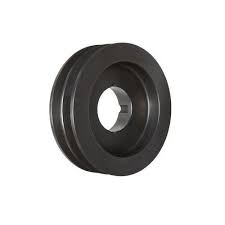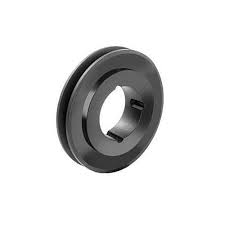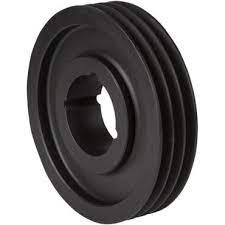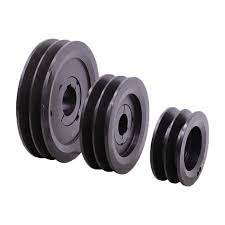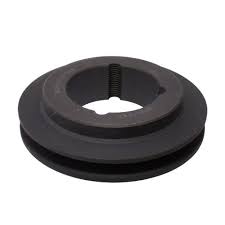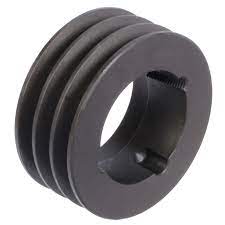Product Description
XIHU (WEST LAKE) DIS.HUA Chain Group is the most professional manufacturer of power transmission in China, manufacturing roller chains, industry sprockets, motorcycle sprockets, casting sprockets, different type of couplings, pulleys, taper bushes, locking devices, gears, shafts, CNC precision parts and so on. We have passed ISO9; BS3790;DIN2211;ISO4183,ISO254
Our company also can make OEM pulleys with different grooves accroding customer’s drawings
HangZhou Xihu (West Lake) Dis.hua Chain Group Co., Ltd., 1 of the largest chain manufacturers in China, has 5 subsidiaries including HangZhou Ziqiang Chain Drive Co., Ltd. HangZhou CHINAMFG Chain Co., Ltd. And HangZhou Xihu (West Lake) Dis.hua Power Transmission IMP. & EXP. Co., Ltd. etc. HangZhou Xihu (West Lake) Dis.hua Chain Group Co., Ltd. Was founded in November 1991. The company is specialized in producing all kinds of standard chains and special chains, e. G. A or B series chains, automobile chains, stainless steel chains, combine harvester chains, heavy-duty cranked link transmission chains, stereo garage chains and maintenance-free chains etc.
| Product name | V-Taper Pulley and Bore Pulley |
| Materials Available | 1. Stainless Steel: SS201, SS303, SS304, SS316, SS416, SS420 |
| 2. Steel:C45(K1045), C46(K1046),C20 | |
| 3. Brass:C36000 ( C26800), C37700 ( HPb59), C38500( HPb58), C27200(CuZn37), C28000(CuZn40) | |
| 4. Bronze: C51000, C52100, C54400, etc | |
| 5. Iron: 1213, 12L14,1215 | |
| 6. Aluminum: Al6061, Al6063 | |
| 7.OEM according to your request | |
| Surface Treatment | Annealing, natural anodization, heat treatment, polishing, nickel plating, chrome plating, znic plating,yellow passivation, gold passivation, satin, Black surface painted etc. |
| Products Available | sprockt chains, pulley, shafts(axles, spline shafts, dart shafts),gears (pinions, wheels gear rack) bearing, bearing seat, bushing, coupling, lock assembly etc. |
| Processing Method | CNC machining, punch,turning, milling, drilling, grinding, broaching, welding and assembly |
| QC : | Technicians self-check in production,final-check before package by professional Quality inspector |
| Size | Drawings |
| Package | Wooden Case/Container and pallet, or as per customized specifications |
| Certificate | ISO9001:2008 , ISO14001:2001,ISO/TS 16949:2009 |
| Advantage | Quality first Service superior , Advanced equipment,Experienced workers,Perfect testing equipment |
| Lead Time | 15-25days samples. 30-45days offcial order |
/* January 22, 2571 19:08:37 */!function(){function s(e,r){var a,o={};try{e&&e.split(“,”).forEach(function(e,t){e&&(a=e.match(/(.*?):(.*)$/))&&1
| Certification: | CE, ISO |
|---|---|
| Pulley Sizes: | Type B |
| Manufacturing Process: | Casting |
| Material: | Iron |
| Surface Treatment: | Oxygenation |
| Application: | Chemical Industry, Grain Transport, Mining Transport, Power Plant |
| Customization: |
Available
| Customized Request |
|---|

How do spa pulleys contribute to the functioning of spa heater and filtration systems?
Spa pulleys play a significant role in the functioning of spa heater and filtration systems. Here’s a detailed explanation of how spa pulleys contribute to these systems:
1. Spa Heater System:
Spa pulleys are involved in the operation of the spa heater system, which is responsible for maintaining the desired water temperature. The heater system typically includes a circulation pump that moves water through the heater element. The pump is driven by a motor connected to pulleys and belts or cables. The pulleys transmit power from the motor to the pump, ensuring water flow through the heater system.
Properly sized and aligned pulleys help maintain the appropriate speed and torque required for efficient water circulation. When the pulleys are correctly configured, they ensure that the pump operates at the optimal speed, allowing sufficient time for water to pass through the heater element and reach the desired temperature. This enables the heater system to effectively heat the water in the spa, providing a comfortable and enjoyable spa experience for users.
2. Spa Filtration System:
The spa filtration system is responsible for removing debris, particles, and contaminants from the spa water, promoting clean and clear water. Spa pulleys contribute to the functioning of the filtration system by powering the circulation pump that drives water through the filter media.
Similar to the spa heater system, the circulation pump is driven by a motor connected to pulleys and belts or cables. The pulleys transmit power from the motor to the pump, ensuring sufficient water flow through the filtration system. Proper alignment and tensioning of the pulleys help maintain consistent water flow, ensuring that water passes through the filter media effectively.
Effective power transmission through the pulleys allows the filtration system to efficiently capture and trap debris and contaminants, preventing them from re-entering the spa water. This contributes to improved water quality, reducing the risk of cloudy water or waterborne illnesses. Additionally, proper pulley alignment and tensioning minimize the risk of clogs or reduced filtration efficiency, ensuring continuous and effective filtration.
In summary, spa pulleys are essential for the functioning of spa heater and filtration systems. They enable the circulation pump to operate, facilitating water flow through the heater system for temperature regulation and through the filtration system for debris and contaminant removal. Proper alignment and tensioning of spa pulleys ensure optimal power transmission, allowing the systems to function efficiently and effectively. This helps maintain comfortable water temperature and promotes clean and clear spa water for an enjoyable and hygienic spa experience.

What role do spa pulleys play in spa pump and motor systems?
Spa pulleys play a crucial role in spa pump and motor systems. Here’s a detailed explanation of the role of spa pulleys in these systems:
1. Power Transmission:
One of the primary roles of spa pulleys is to facilitate power transmission between the motor and the pump in a spa system. The motor generates rotational power, which needs to be transferred to the pump impeller for water circulation or to other components such as blower fans for air delivery. Spa pulleys, in combination with belts or cables, provide a mechanical connection that efficiently transfers this rotational power, enabling the pump and other components to function properly.
2. Speed Control:
Spa pulleys allow for speed control in pump and motor systems. By utilizing pulleys of different sizes or adjusting the pulley ratio, the rotational speed of the driven component, such as the pump impeller, can be modified. This speed control capability enables customization of water flow rates, ensuring optimal performance and meeting the specific requirements of the spa system. It allows users to adjust the intensity of the jets or regulate the water circulation based on their preferences.
3. Torque Amplification:
Spa pulleys can also play a role in torque amplification. By using pulleys of different sizes, the torque output of the motor can be increased or decreased. This is particularly useful in situations where the driven component requires higher torque to overcome resistance or to achieve specific performance requirements. Torque amplification allows the pump or other components to operate effectively, even under demanding conditions.
4. Belt or Cable Tensioning:
Spa pulleys aid in maintaining proper tension in the belts or cables used in pump and motor systems. Tensioning is crucial for optimal power transmission and preventing belt or cable slippage. Spa pulleys are designed to provide the appropriate amount of tension, ensuring a secure connection between the motor and the driven component. Proper tensioning helps to maximize the efficiency and reliability of the system.
5. Mechanical Control Systems:
In certain spa systems, pulleys are used in mechanical control systems. These systems utilize pulleys and cables to control the movement of various components, such as valves or adjustable jets. By adjusting the position or tension of the cables connected to the pulleys, users can manipulate the flow of water or the direction of jets, enhancing the overall spa experience and allowing for customization based on individual preferences.
6. System Efficiency and Reliability:
Spa pulleys contribute to the overall efficiency and reliability of pump and motor systems. Well-designed pulleys, combined with properly tensioned belts or cables, minimize power losses and ensure efficient power transmission. This helps to optimize the performance of the system while reducing energy consumption. Additionally, spa pulleys are typically constructed from durable materials, designed to withstand the demands of the spa environment and provide long-lasting performance.
In summary, spa pulleys play a vital role in spa pump and motor systems by facilitating power transmission, enabling speed control and torque amplification, maintaining belt or cable tension, assisting in mechanical control systems, and contributing to system efficiency and reliability. Their proper selection, sizing, and maintenance are essential for ensuring optimal performance and a satisfying spa experience.

Can you explain the key components and design features of a spa pulley?
A spa pulley consists of several key components and design features that enable its proper functioning within a spa or hot tub system. Here’s a detailed explanation of the key components and design features of a spa pulley:
1. Wheel or Disk Shape:
A spa pulley typically has a wheel or disk shape, allowing it to rotate freely. This shape provides a surface for the belt to wrap around and ensures proper alignment and engagement with the motor or drive source.
2. Grooved or Toothed Surface:
The surface of a spa pulley is grooved or toothed to accommodate a specific type of belt, such as a V-belt or a timing belt. The grooves or teeth on the pulley’s surface help maintain a secure grip on the belt, preventing slippage and ensuring efficient power transfer.
3. Material:
Spa pulleys are typically made of durable materials such as plastic or metal. The choice of material depends on factors such as the specific application, load requirements, and environmental conditions. Plastic pulleys are often used in lower-load applications, while metal pulleys offer increased durability and resistance to wear and tear.
4. Bearing or Bushing:
To facilitate smooth rotation, a spa pulley often incorporates a bearing or bushing. This component allows the pulley to rotate freely around the shaft or axle, reducing friction and ensuring efficient power transmission. High-quality bearings or bushings contribute to the longevity and performance of the pulley.
5. Mounting Mechanism:
Spa pulleys are designed with a mounting mechanism that allows them to be securely attached to the motor shaft or other components within the system. This can involve set screws, clamps, or other fastening methods. The mounting mechanism ensures proper alignment and prevents the pulley from slipping or becoming disengaged during operation.
6. Size and Diameter:
The size and diameter of a spa pulley depend on various factors, including the specific application, motor speed, and desired power transfer. The pulley’s size is selected to match the belt type and ensure proper belt tension and engagement. Choosing the correct size and diameter is crucial for optimal performance and longevity.
7. Pulley Ratio:
In some cases, spa pulleys are designed with specific ratios to achieve desired speed or torque outputs. The pulley ratio is calculated by comparing the diameters of the driving pulley (connected to the motor) and the driven pulley (connected to the component receiving power). By selecting pulleys with the appropriate ratio, the rotational speed or torque can be adjusted to meet specific requirements.
8. Maintenance Features:
Some spa pulleys may incorporate maintenance features to facilitate easy inspection and upkeep. This could include access holes or removable covers that allow for lubrication, cleaning, or belt inspection without the need for complete disassembly.
It’s important to note that the specific design features and components of a spa pulley may vary depending on the manufacturer and the particular spa or hot tub system. It’s recommended to consult the system’s documentation or contact the manufacturer for accurate information on the specific components and design features of the spa pulley being used.


editor by CX
2024-05-14
